
Many in the business world have heard the age-old cautionary phrase, “don’t put all your eggs in one basket.” This call for diversification is especially valid for the construction and landscaping industries which are, by their very nature, seasonal. They are especially vulnerable to wild swings in demand, the loss of key customers, weather related downtime, and below market bids from low quality or desperate competitors.
One successful strategy for diversification is to consider a company’s existing capabilities and resources and how they might be utilized in the offseason. Snow management is often one of the first areas of opportunity considered because it is needed most while construction and landscaping is relatively idle. The chance for steady, year-round work, increased profit potential and a list of other benefits make snowplowing a lucrative opportunity and possibly the difference between thriving or just surviving.
Big benefits
If there is snow in your area, you can bet that you have an offseason that runs from at least December through March, and possibly longer. A particularly wet spring can extend it several weeks longer. Regardless, that is at least a third of the year where equipment and employees are idle, a sizeable chuck of time to be sitting without work.
When you consider what you need to start a snow removal business, many of the pieces are already in place. Existing wheel loaders, tractors, excavators, backhoes, skid steers and track machines may all be fitted with snow pushers and plows. You already have trained and reliable operators, which are difficult to come by these days. And finally, you may have an established commercial customer base that you can easily turn into snow removal clients.
Chad Oberson, the founder of Oberson’s Nursery, based in Fairfield, Ohio is a shining example of a landscaping contractor who diversified successfully into snow removal. In little time he recognized that snow contracting services were the real money maker and accounted for over 70 percent of his profits. He identified himself as a small business at the time. With the right equipment and with a motivated workforce, he soon expanded his snow business into Indiana and Kentucky and now owns the largest fleet of John Deere 244L wheel loaders in the world, all dedicated to snow.
Loan payments and equipment depreciation take place regardless of whether equipment is utilized or not, which is even more reason you want to use it all year round. If you are currently renting or leasing equipment because of your seasonality, you will find that your enhanced utilization gives you the ability to negotiate better purchase or financing terms.
In addition to improving equipment utilization in the off season, consider employee retention following seasonal layoffs. Many companies permanently lose good workers, as some may seek out new, year-round jobs and not return when construction kicks back into high gear. In addition, many laid-off employees do not look for temporary jobs but instead collect unemployment. This elevates the company’s unemployment insurance costs, adding major expenses without steady work to offset that cost. By offering the opportunity for year-round employment, a business minimizes the risk of losing quality employees and eliminates the costs associated with hiring and training replacements.
Having year-round services offers the additional opportunity to maximize revenues from existing customers, by becoming more of a “one-stop shop” – a place to go for multiple needs. The new, planned supermarket in town needs to have its parking lot poured, but also have that lot plowed every year thereafter. A diversified construction company can demonstrate the convenience of working with a full-service company by touting the fact it can both pour the concrete and later snowplow the lot. The same is true for landscaping. The client is reassured that you will not only do a nice job on his snow removal but be careful to protect the landscaping you installed over the summer.
Finally, it is a business opportunity that can never go away. When snow falls, it needs to be cleared. It’s not up for discussion, argument or interpretation. Snow simply must be cleared to keep roads and businesses open, and prevent dangerous, slippery conditions.
Efficient equipment
Successfully entering the snow removal business requires securing the right equipment. These initial costs can seem intimidating to contractors with limited capital, but when the right decisions are made, the actual returns make this a no-brainer. It’s like anything else you need the right tool for the job.
One of the biggest upfront costs for a snowplowing operation is the equipment needed to push the snow. This includes both the actual snow pushers and the machines driving the operation. However, a contractor’s existing machines such as loaders and skid steers can all be repurposed for snow removal, rather than being left idle for the winter season, leaving the pusher as the key piece of equipment to consider.
To draw the distinction between pushers and plows, a plow is an angled blade that guides snow to either side of the driver. A pusher is a containment or box plow with side wings that contains a great quantity of snow which it moves from one end of a parking lot to the other, where it is piled up out of the way. The pusher is the work horse of any commercial snow operation and should be its primary tool.
To select the proper snow pusher, a contractor must first analyze the existing fleet and select the size pusher that will match well to that machine. Each model of pusher is meant for a particular size of equipment – meaning one designed for a large loader would not work on a small skid steer. Local dealers provide assistance to contractors looking to purchase the right pusher for his or her equipment. Snow pushers come in a variety of sizes, with the smallest measuring 8 feet to larger units extending well over 20 feet. Contractors can minimize equipment costs by analyzing their existing fleet and then fitting with the appropriate-sized pushers. For example, a small skid steer could be outfitted with an 8-foot snow pusher and be ready for use. Those with larger equipment in their fleet would want to look at snow pushers in the 16 to 20 ft range.
No matter how big or small the snow pusher, it is important to purchase one with the greatest potential for return on investment. A high-quality snow pusher will typically pay for itself in the first 30 inches of snowfall – a relatively quick return, considering many areas of the country average this amount in the first few months of the winter season.
When it comes to choosing a high-quality pusher, remember: All snow pushers are not created equal. Many are designed to increase efficiency, cut back on salt usage and reduce potential property damage, and some have unique design features that vastly improve its safety profile.
A pusher featuring a sectional moldboard design moves more snow with each pass, and greatly cuts down on plowing and follow up re-plowing time. Each section moves up and down independently, enabling the plow to essentially contour to uneven surfaces and remove snow from dips and depressions in pavement. Because they are can remove more snow and ice with one pass, less salt is required. It is also important to look at the unit’s cutting edge. Rubber and steel trip edges are most common options, with steel cutting edges typically being the best. Steel edges scrape snow and ice down to the pavement and offer cleaner removal with a single pass, further reducing salt needs.
Additionally, it is worth considering a pusher with mechanical side panels. Unlike rigid, fixed side panels, mechanical panels are designed to rotate up and over obstructions like curbs and medians. While this saves greatly on potential damage to the plow, the real benefit comes in preventing expensive damage to the client’s property. Snowplow companies can spend tens of thousands of dollars each year repairing expensive curbing and other such features commonly found in parking lots and on streets.
Some sectional or sectional-like designs use springs as the basis of their up and down movement. The problem with springs is that they are designed to release when encountering a mound of hardpacked snow or ice and so do not perform well in those instances. Also, while they may be able to lift over bumps, they cannot dip into depressions in the pavement. The other negative to springs is that if there is a serious unforeseen impact, springs can deform and the moldboards become damaged, the same as would result in a conventional one-piece design.
A far better design employs the use of flexible polyurethane blocks that add torque to the cutting edge, cleaning up ice and hardpack as easily as the soft stuff. The blocks flex up and down so the sectioned edges can both avoid obstacles and reach into depressions. They also act as bumpers to protect the equipment and the operator. If the impact is serious enough, the blocks are designed to break before any steel is deformed or the operator hits the windshield, and they can be replaced for under $100.
Finally, the more modern and advanced pushers may also feature newer hitch designs, providing ease of operation and enhanced results. A snow pusher is picked up and set down hundreds of times during a snow event. Typical hitch designs force the operator to manually adjust the plow each time it’s dropped, making for a very challenging, time-consuming and often frustrating process, especially for inexperienced operators. Newer “drop-and-go” hitch designs do this automatically, saving precious time and ensuring a properly placed pusher every time. This is an extremely important but overlooked point until one has actual experience behind a snow pusher. Your operators may be good at what they do, but snow pushers are extremely heavy and take some getting used to. For example, when Arctic Snow and Ice Control introduced the patented Slip-Hitch universal mounting system, operators who had never plowed a day in their life, were very soon able to plow like experts that had several years under their belts.
While the pusher is indeed the most significant tool for your business, you need to consider your secondary equipment. Items such as sand and salt spreaders, liquid anti-icing applicators, or snow brooms may be required, depending on the extent of services offered by each individual company. The same principles apply – take the time to research features and benefits. An informed equipment selection is well worth the effort and will pay back dividends.
With the decision to diversify made and the equipment purchased, only one big question remains: How to price this new service.
Pricing potential
Understandably, this is the most critical element in successfully entering the snow removal arena. Without a proper pricing strategy, even with steady work, a company won’t be successful.
It’s worth noting upfront that with any pricing strategy, the determining factor in profitability is the weather, which unfortunately, can’t be predicted. Contractors may have an idea of how much snow could fall that winter, but it’s impossible to know the actual amount. So, a certain level of risk versus reward will be factored into any pricing strategy.
There are three basic pricing options and it’s up to each individual contractor to decide what’s best for his or her operation.
- Hourly - The tactic for this pricing strategy is the most straightforward and easily understood. The snow contractor charges customers an hourly rate based on the time and materials necessary to get the job done. There is less risk to the contractor, the company gets paid for the work completed, no more no less. There is also less profit potential since no real value is placed on contractor efficiency. The contractor may end up paying more to hourly workers who are, consciously or sub-consciously, dragging out the process in the attempt to take more time and charge the client more. This can inhibit profits by limiting the number of contracts the company can take while it also may harm its reputation by appearing slow or unethical.
- Per push - In this example, customers agree to be charged by the event with the establishment of a trigger depth. The trigger depth is the decided-upon amount of snow that must be on the pavement before the contractor comes out to plow. The advantage of per-push pricing is the guarantee of payment for the work done on each visit. If it is a heavy snow season, the money made will be significant. This approach also rewards efficiency because per push cost is based on an expected hourly calculation. If the crew finishes the job faster, the whole company wins. The drawback is the risk assumed by the contractor. If it is a light snow season, the plows will not go out as often, eliminating the opportunity for work and dollars earned.
- Seasonal Contract - A seasonal contract is based on one flat rate to provide snowplowing services for an entire winter season. The advantage of this contract is the guarantee of a set payment throughout the winter, regardless of snowfall. If there’s only one blizzard the entire season, the contractor is still paid the full amount for that season. However, in a heavy snow year, more work than originally anticipated will be required on the part of the contractor. As mentioned previously, the amount of snowfall or trigger depth will be the deciding factor on when to dispatch the plows. It is important to note there are two subcategories with regards to the seasonal contract option: with or without a cap. The scenario detailed above would be a seasonal contract without a cap. In this case, whether it snows 10 inches or 100 inches, the amount paid by the client is fixed. However, with a cap in place (for example, a 40-inch cap) the amount paid would abide by the contract price up to 40 inches. Anything after 40 inches would be billed at an agreed-upon per push or hourly rate.
When supplying a service, it is advantageous to be flexible when it comes to pricing. Different parts of the country have a different history regarding pricing. Also, each client may have his own preferences. The contractor may have to consider a blend of all three in order to successfully bid his area, and to satisfy all parties.
The decision of a seasonal business to diversify is either a choice or a necessity, depending on your outlook. For a construction or landscaping firm, most expert seem to agree that it is an easy transition to snow. With the right tools and willing employees, it is a fairly straightforward path to a business model that works and, in many cases, with great results.
Ultimately, the decision to diversify a business by adding snow removal services is up to each individual contractor. However, armed with a full understanding of the benefits and risks involved, contractors can take the leap into the snowplowing arena, and ensure their business will not be left out in the cold this winter season.

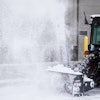

![Doosan Bobcat Wacker Neuson Stack 2ec Js Pb V6e[1]](https://img.greenindustrypros.com/mindful/acbm/workspaces/default/uploads/2025/12/doosan-bobcat-wacker-neuson-stack2ecjspbv6e1.CPyyz8ubHn.png?auto=format%2Ccompress&bg=fff&fill-color=fff&fit=fill&h=100&q=70&w=100)

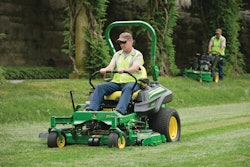
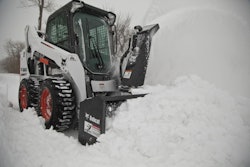


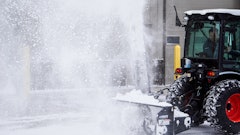

![Doosan Bobcat Wacker Neuson Stack 2ec Js Pb V6e[1]](https://img.greenindustrypros.com/mindful/acbm/workspaces/default/uploads/2025/12/doosan-bobcat-wacker-neuson-stack2ecjspbv6e1.CPyyz8ubHn.png?ar=16%3A9&auto=format%2Ccompress&bg=fff&fill-color=fff&fit=fill&h=135&q=70&w=240)
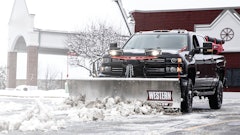
![Gravely Pro Turn Mach One My23 Dsc03139 Edit 1200x800 5b2df79[1]](https://img.greenindustrypros.com/mindful/acbm/workspaces/default/uploads/2025/10/gravely-pro-turn-mach-one-my23-dsc03139-edit-1200x800-5b2df791.BucBnDoN22.jpg?ar=16%3A9&auto=format%2Ccompress&fit=crop&h=135&q=70&w=240)
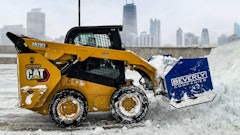

![Kubota Snow ah3 Sgv25ua[1]](https://img.greenindustrypros.com/mindful/acbm/workspaces/default/uploads/2025/10/kubota-snowah3sgv25ua1.bAUoUSziui.png?ar=16%3A9&auto=format%2Ccompress&bg=fff&fill-color=fff&fit=fill&h=135&q=70&w=240)


